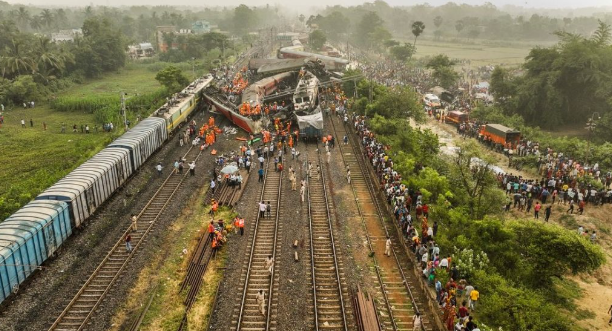Crisis and Priorities of Indian Railways (GS Paper 1, Governance)

Introduction
- The recent tragic train accident near Siliguri in West Bengal has once again highlighted the deep-seated challenges facing the Indian Railways.
- This incident, which resulted in significant loss of life and injuries, underscores the urgent need for a comprehensive reassessment of the railway system's priorities and investments to ensure safety, efficiency, and modernization.
History of Deadly Train Accidents in India
- India has witnessed several major train accidents since 1995, with notable disasters like the Firozabad collision in 1995 and the Balasore multiple train collision in Odisha.
- These incidents have collectively claimed thousands of lives, exposing systemic flaws in safety protocols and infrastructure management.
Significance of Railways to India
- Critical Infrastructure: The Indian Railways plays a pivotal role in connecting vast and densely populated regions of the country. It serves as a lifeline for transportation, commerce, and passenger travel.
- Market Share Challenges: Despite its historical importance, Indian Railways has faced declining market share in both passenger and freight transport sectors, losing ground to more agile road and air transport alternatives.
Railways' Current Crisis
- Performance Metrics: The railways are currently grappling with critical issues such as stagnant speed improvements, poor punctuality, and persistent safety concerns.
- Operational Challenges: Overburdened infrastructure, outdated technology, and inadequate maintenance contribute to operational inefficiencies and safety risks.
Comptroller and Auditor General (CAG) Reports on Railways
- Performance Audit: Recent CAG reports have pointed out shortcomings in speed enhancement initiatives, highlighting that average speeds of mail and express trains have remained stagnant.
- Safety Audit: The audit also raised alarms about high rates of signal failures and asset failures, which continue to pose significant safety hazards despite efforts to address unmanned crossings.
Future Outlook and Challenges
- Misaligned Priorities: In recent decades, Indian Railways has pursued ambitious yet financially questionable projects, including standalone bullet train lines and dedicated freight corridors. These projects have often overshadowed essential investments in core infrastructure and safety enhancements.
- Infrastructure Investments: While initiatives like the introduction of Vande Bharat semi-highspeed trains represent technological advancements, the focus on luxury and cosmetic improvements has sometimes diverted attention from crucial operational upgrades.
Conclusion
- The tragic incident in West Bengal serves as a stark reminder of the critical need for a strategic rethink in Indian Railways' priorities.
- Moving forward, there is a pressing need to prioritize investments in safety, speed enhancements, and infrastructure modernization over costly vanity projects.
- By addressing these fundamental challenges, Indian Railways can regain public trust, improve operational efficiency, and ensure the safety and reliability of its extensive network, thereby reaffirming its role as a backbone of India's transportation infrastructure.


